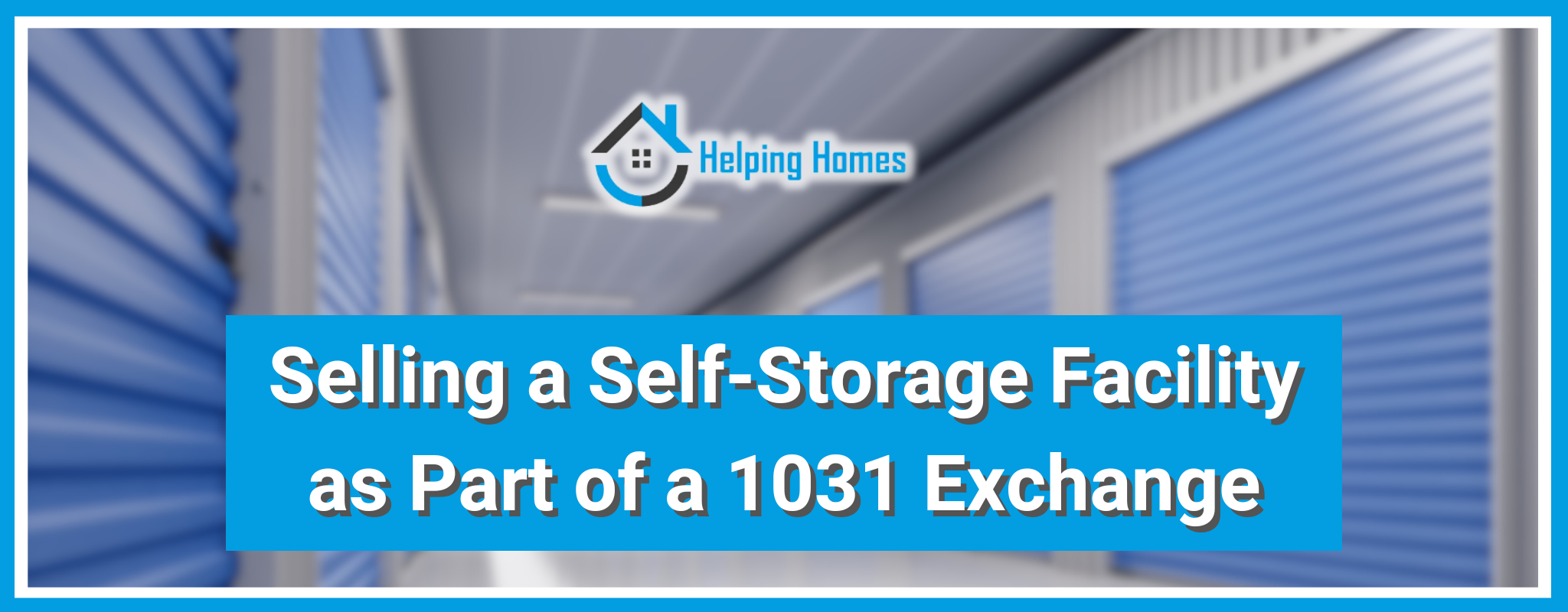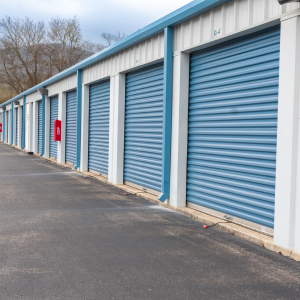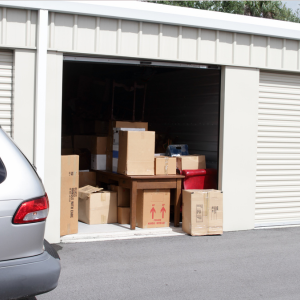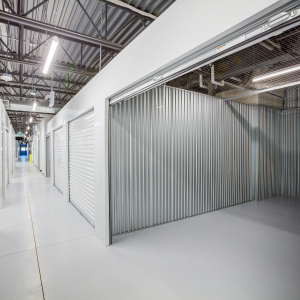
TABLE OF CONTENTS
- The Roots And Evolution Of 1031 Exchange Trends
- Understanding The Basic Numbers Of Real Estate Exchanges
- What Is A Reverse Exchange And How Does It Work?
- Frequently Asked Questions About Real Estate Exchanges
- A Comprehensive Guide To Self-Storage Real Estate Gain Taxes
- Navigating Capital Gains Tax In Commercial Property Sales
- Maximizing Profit With Tax-deferred Installment Sales In Exchanges
- Utilizing Entity Restructuring For Effective Estate Planning In Exchanges
- Stay Up-to-date With Our Recent Posts On Real Estate Exchanges
- Check Out Our Most Popular Articles On 1031 Exchanges And Self Storage Investments
- Defining The Concept Of Self-storage For Investors And Entrepreneurs
- Get Informed: Where To Find More Information On Self-storage Investments
- Unlocking The Potential Of Selling A Self-storage Facility In A 1031 Exchange In The Us
- A Step-by-step Guide To Executing A Successful 1031 Exchange In Self-storage
- Mastering The Art Of Identifying Like-kind Properties For Exchanging
- Maximizing ROI: Advantages Of Including Self-storage In Your Investment Portfolio
- Can An LLC Use A 1031 Exchange?
- Can You 1031 Exchange A Rental Into A Primary Residence?
- Can I Sell Two Properties In A 1031 Exchange?
- Can A 1031 Exchange Include Foreign Property?
The Roots And Evolution Of 1031 Exchange Trends
The concept of a 1031 exchange has been around for decades, but it wasn’t until the Tax Reform Act of 1986 that it gained popularity among real estate investors. This act allows for the deferral of capital gains taxes when selling one investment property and purchasing another similar property within a certain timeframe.
In the early 2000s, 1031 exchange activity increased, especially in the self-storage industry. As more investors realized the benefits of this tax-deferred strategy, demand for self-storage facilities increased, resulting in higher property values and maximum gains for 1031 exchange participants.
The use of 1031 exchanges has become increasingly popular among investors seeking to minimize taxes and maximize real estate gains.
Understanding The Basic Numbers Of Real Estate Exchanges

When selling your self-storage facility in a 1031 exchange, understanding the fundamental numbers is critical for maximizing your real estate gains. This type of exchange defers capital gains taxes by reinvesting the sale proceeds into a comparable property.
However, certain numbers and ratios must be considered in order to successfully complete a 1031 exchange. These include the adjusted basis of your existing property, the fair market value of the replacement property, and any potential boot or taxable gain.
It is also critical to consider any debt on the property and ensure that it is properly accounted for during the exchange. Understanding these key numbers can help you plan your 1031 exchange and maximize your returns.
What Is A Reverse Exchange And How Does It Work?
A reverse exchange is a complex real estate transaction that enables investors to defer capital gains taxes when selling their self-storage facility via a 1031 exchange. It works by allowing the investor to buy a replacement property before selling their existing one, avoiding the time constraints of a traditional 1031 exchange.
This allows for greater flexibility and strategic planning because the investor can find and secure the ideal replacement property before selling their existing self-storage facility. The process involves working with a qualified intermediary to hold the replacement property until the original one is sold and then completing the exchange within the IRS’s time frames and requirements.
A reverse exchange can help self-storage facility owners maximize real estate gains and reduce tax liabilities when upgrading or diversifying their investment portfolios.
Frequently Asked Questions About Real Estate Exchanges

If you’re thinking about selling your self-storage facility and using a 1031 exchange, you’re probably wondering how the process works. One common question is whether the property has to be an exact match to qualify for the exchange.
The answer is no, provided certain criteria are met. Another frequently asked question is whether there are any time limits for completing a 1031 exchange.
The answer is yes because specific timeframes must be met for the exchange to be valid. Furthermore, many people wonder if they can use a qualified intermediary to handle the transaction on their behalf.
The answer is yes. Using a qualified intermediary is highly recommended when navigating the complexities of a 1031 exchange. Here are some frequently asked questions about real estate exchanges when selling a self-storage facility.
A Comprehensive Guide To Self-Storage Real Estate Gain Taxes
If you own a self-storage facility and want to sell it to maximize your real estate gains, you should consider the 1031 exchange tax strategy. You can defer capital gains taxes by reinvesting the sale proceeds into another “like-kind” property within a set time frame.
However, understanding the complex tax laws governing self-storage real estate gains can be difficult. That is why it is critical to have a comprehensive guide to help you understand the process and maximize your tax-saving opportunities.
This guide will help you successfully execute a 1031 exchange for the sale of your self-storage facility, from understanding the rules and regulations to identifying potential properties.
Navigating Capital Gains Tax In Commercial Property Sales

The possibility of capital gains tax is an important consideration when selling a self-storage facility in a 1031 exchange. To maximize profits from a sale, it’s crucial to carefully navigate this tax.
One strategy is to use a 1031 exchange to defer capital gains tax by reinvesting proceeds in a similar property. This can be useful for maximizing real estate gains while avoiding significant tax payments.
However, understanding the specific rules and regulations governing 1031 exchanges is critical for successfully navigating this aspect of selling a commercial property. By doing so, investors can save thousands of dollars in taxes and increase their overall gains from selling their self-storage facility.
Maximizing Profit With Tax-deferred Installment Sales In Exchanges
Using a 1031 exchange is an effective strategy for increasing profits when selling a self-storage facility. Property owners can defer capital gains taxes by reinvesting the sale proceeds in another comparable property.
To maximize gains from a 1031 exchange, consider tax-deferred installment sales. This method allows for the gradual receipt of payments over time, which can help reduce the tax burden while ultimately increasing overall profits.
Properly planning and executing a 1031 exchange with tax-deferred installment sales can provide significant financial benefits while diversifying a property portfolio.
Utilizing Entity Restructuring For Effective Estate Planning In Exchanges

When it comes to maximizing real estate gains from a 1031 exchange, entity restructuring can be a highly effective estate planning strategy. Restructuring ownership of your self-storage facility can maximize profits and take advantage of tax benefits.
By transferring ownership to a different entity, such as a trust or LLC, you may be able to defer capital gains taxes and potentially lower your overall tax burden. This protects your assets and facilitates future ownership transfers.
Proper entity restructuring can optimize the sale of a self-storage facility for both financial gain and long-term estate planning.
Stay Up-to-date With Our Recent Posts On Real Estate Exchanges
Keeping up with the latest real estate exchange news is critical for maximizing profits when selling your self-storage facility. Our recent posts cover all aspects of the 1031 exchange process, including how to find a qualified intermediary, identify replacement properties, and navigate tax implications.
We also provide expert insight into market trends and strategies for negotiating the best deal for your self-storage facility. Regularly reading our informative articles on real estate exchanges will keep you informed and ahead of the game.
With our assistance, you can make confident strategic decisions that will help you maximize profits from your property sale.
Check Out Our Most Popular Articles On 1031 Exchanges And Self Storage Investments

If you want to sell your self-storage facility and maximize your real estate gains, consider a 1031 exchange.
This article explains how and why this type of exchange can benefit self-storage industry professionals.
We’ll go over the ins and outs of 1031 exchanges, including rules and regulations, success strategies, and how to find the right investment property.
Whether you’re an experienced investor or new to the self-storage market, these popular articles on 1031 exchanges and self-storage investments are essential reading to help you make informed real estate decisions.
Defining The Concept Of Self-storage For Investors And Entrepreneurs
Self-storage facilities are now a popular way for both experienced investors and new business owners to put their money to work. People can store their things in these places safely and securely, and the prices are usually reasonable.
Self-storage facilities are a great way for investors to make steady cash flow and get the most out of their real estate investments. Self-storage is becoming more popular, so people who want to sell their homes should learn all about this business model before they think about a 1031 exchange.
Self-storage owners who want to sell their facility as part of a 1031 exchange need to know a lot about the business. They need to know about the different types of storage units that are available and the most important things that make people successful in this field.
Get Informed: Where To Find More Information On Self-storage Investments

Understanding the 1031 exchange process and potential benefits is crucial before selling your self-storage facility. Luckily, many resources can help you understand self-storage investments.
Self-storage owners and investors can find industry news, market trends, and educational materials from the National Self-Storage Association. Real estate agents and attorneys specializing in 1031 exchanges can offer tailored advice.
Researching recent self-storage sales and transactions can help understand current pricing and demand. Staying informed through these sources helps you maximize real estate gains through a 1031 exchange for your self-storage facility.
Unlocking The Potential Of Selling A Self-storage Facility In A 1031 Exchange In The U.S.
To maximize your real estate gains in the United States, consider selling your self-storage facility via a 1031 exchange. This tax-deferred exchange allows you to sell one investment property and buy another while deferring your capital gains taxes.
Using this strategy, investors can maximize the value of their self-storage facility by reinvesting in a new property that better meets their investment objectives. However, mastering the complexities of a 1031 exchange necessitates meticulous planning and execution.
Working with experienced professionals who can guide you through the process and help you achieve the highest possible returns on your self-storage facility sale is critical, from identifying replacement properties to meeting strict timeline requirements.
A Step-by-step Guide To Executing A Successful 1031 Exchange In Self-storage

When selling a self-storage facility, a 1031 exchange can help you maximize your real estate gains. To ensure success, it is critical to clearly understand and follow the process step by step.
The first step is to find a qualified intermediary who will hold the sale proceeds and facilitate the transaction. The seller must identify potential replacement properties within 45 days of the sale.
Once identified, the seller has 180 days to close on one or more replacement properties. It is critical to thoroughly research and analyze potential replacement properties to ensure that they meet investment objectives and qualify for the exchange.
A tax advisor or real estate attorney can also help you navigate complex tax implications. By carefully following these steps, sellers can complete a successful 1031 exchange in self-storage, maximizing their real estate profits.
Mastering The Art Of Identifying Like-kind Properties For Exchanging
Mastering the art of identifying like-kind properties is essential for successfully using a 1031 exchange to sell your self-storage facility and maximize real estate gains. This necessitates a thorough understanding of what qualifies as a like-kind property under the Internal Revenue Code, as well as strategic research and planning.
It is critical to thoroughly evaluate potential replacement properties to ensure they meet the criteria for a successful exchange. This includes factors like location, property type, and potential for future growth or income.
By carefully selecting like-kind properties, investors can increase their real estate portfolio while receiving significant tax benefits.
Maximizing ROI: Advantages Of Including Self-storage In Your Investment Portfolio

Adding a self-storage facility to your investment portfolio can significantly improve ROI. Self-storage facilities are becoming more popular as an investment opportunity due to their consistent cash flow and low maintenance costs.
Furthermore, including a self-storage facility in a 1031 exchange can result in tax breaks and increased profits. Investing in a self-storage facility can diversify an investment portfolio and maximize real estate gains as demand for storage space increases.
With proper planning and research, incorporating self-storage into your investment strategy can lead to long-term financial success.
Can An LLC Use A 1031 Exchange?
Many real estate investors are familiar with the concept of a 1031 exchange, which allows them to defer capital gains taxes by reinvesting the proceeds from the sale of one property in another similar property. However, a common question is whether an LLC can benefit from this tax strategy.
The short answer is yes; an LLC can use a 1031 exchange as long as certain requirements are met. These requirements include using the proceeds from the sale of the self-storage facility to purchase another investment property within a set timeframe and ensuring that all properties involved are held for business or investment purposes.
LLC owners can maximize their real estate gains and continue to grow their portfolios by using a 1031 exchange, which avoids the burden of high capital gains taxes.
Can You 1031 Exchange A Rental Into A Primary Residence?

If you own a self-storage facility and are thinking about selling it, you might be wondering if you can use a 1031 exchange to convert it into your primary residence. Yes, but certain requirements must be met before the exchange can be considered valid.
The property must have been rented out for at least two years prior to the exchange, and you must continue to live there for at least two years after the exchange. In addition, the new property must be of equal or greater value and serve as your primary residence for at least two years.
You can maximize your real estate gains and convert your rental property into your dream home by using a 1031 exchange correctly.
Can I Sell Two Properties In A 1031 Exchange?
If you’re thinking about selling your self-storage facility, you might wonder if you can use a 1031 exchange to maximize your real estate gains. Yes, you can sell two properties in a 1031 exchange, provided they meet IRS requirements.
According to Section 1031 of the IRS Code, investors can defer paying capital gains taxes on the sale of investment properties by using the proceeds to buy like-kind properties. This means you can sell your self-storage facility and use the proceeds to buy another investment property, such as a multi-unit rental building, without incurring any immediate tax liabilities.
To ensure a successful 1031 exchange, consult with a qualified tax advisor and adhere to IRS guidelines and timelines. By utilizing this effective tax strategy, you can maximize your real estate gains while also expanding your investment portfolio.
Can A 1031 Exchange Include Foreign Property?
Investors can use a variety of strategies to maximize their real estate gains. One popular method is the 1031 exchange, which allows you to sell a property and reinvest the proceeds in another property without paying immediate taxes.
However, many people wonder if this exchange can include foreign properties. The answer is yes, as long as the property meets certain criteria and is a “like-kind” exchange.
This means that both properties must be held for investment or business purposes and have similar features, such as self-storage units. To ensure a successful 1031 exchange with foreign properties, consult with a tax professional and strictly adhere to all guidelines.
Using this strategy, investors can continue to grow their real estate portfolio while deferring taxes and maximizing profits.
This information applies to the United States. Please call us at (585) 294-4658 for assistance or if you have questions. You can also visit our website at Helping Homes REI, LLC for more details.
These findings apply to all states, including New York, Florida, Georgia, North Carolina, South Carolina, and Pennsylvania. If you need to sell a self-storage business fast and would like a cash offer, then contact us today. We buy self-storage facilities all the time and Helping Homes REI, LLC can make a cash offer on yours in 24 hours or less.
| TAXPAYERS | TAX RATE | TAXATION | TAXED | LIKE-KIND EXCHANGES | TAX DEFERRAL |
| RENTALS | INTEREST | MARKET DEMAND | DEPRECIATION | MARKETS | RISK |
| DOWNTURNS | RECESSION | MONEY | LIABILITY | LEASES | LEASED |
| REAL ESTATE INVESTMENTS | PERCENTAGE | WEALTH | THE UNITED STATES | AMERICAN | DEDUCT |
| DEDUCTIONS | STREAMS | REALTORS | TENANTS | TURNOVER | |
| ILLIQUIDITY | ILLIQUID SECURITIES | IRC | TAX CODE | FEDERAL INCOME TAXES | FEDERAL INCOME TAX |
| INCOME TAXES | FEES | TRANSACTION FEES | COMPANIES | COMPANY | TAXPAYER |
| SWAP | ACQUISITION | MARKETING | MANAGEMENT | KNOWLEDGE | DIVERSIFICATION OF RISK |
| DIVERSIFICATION | CORPORATIONS | CONSTRUCTION | COMMUNICATION | COMMERCIAL REAL ESTATE | SELF STORAGE FACILITY |
| A SELF STORAGE FACILITY |


